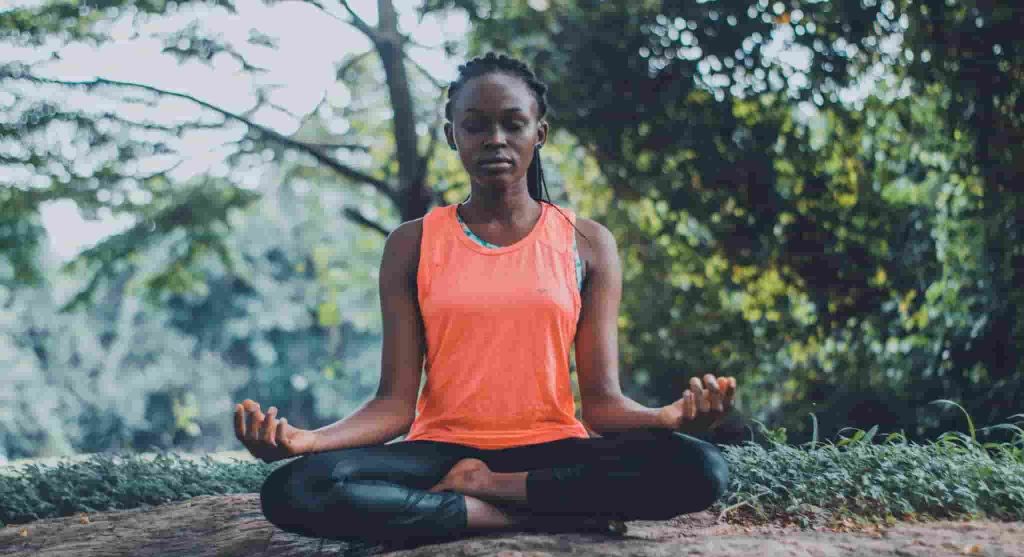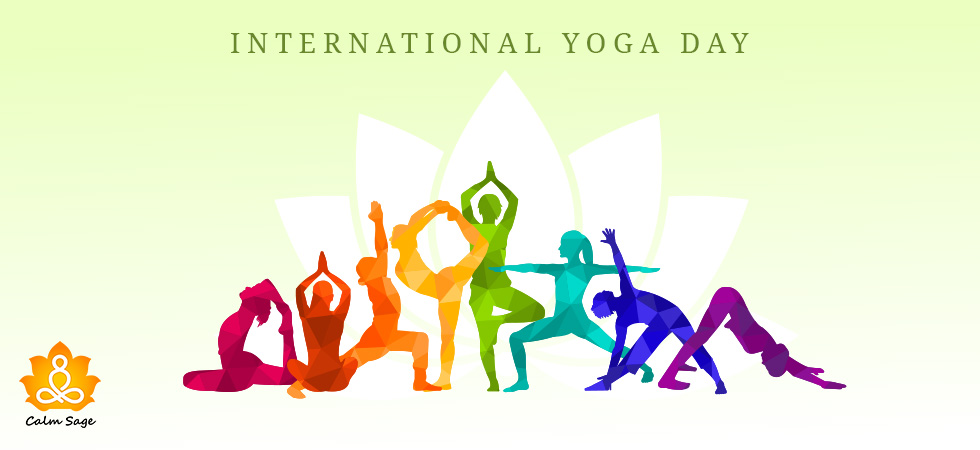Yoga For Trauma Release: A Unique Way To Cope With Trauma

Yoga is one of the most effective healing techniques – whether it be mind, body, or spirit. While many people find yoga beneficial, some might not benefit from it. Yes, I’m talking about those who’ve experienced trauma in their lives. If you’ve lived through a traumatic experience, then yoga has the potential to harm rather than heal.
Trauma is an emotional or physical response to a life-threatening event and can leave long-lasting wounds on your mental, emotional, and physical health.
Trauma is one of the most common experiences that people all over the world experience. If you’ve ever experienced trauma then you know how it affects almost every aspect of your life – from trust issues to a sense of safety. With the right trauma-informed approach, you can heal from trauma and move forward in your life.
In this blog, we’re exploring one of those trauma-informed healing approaches – trauma-informed yoga practices. Let’s take a look at how yoga can help in trauma relief, what to avoid, and how to get started with trauma-informed yoga.
What Is Trauma-Informed Yoga?

Trauma is an experience that affects the mind, body, and spirit, meaning that practices that include the mind-body connection. Maintaining this mind-body-spirit connection can be challenging (and even downright harmful) if you’re living with trauma.
That’s where trauma-informed yoga comes in. Trauma-informed yoga is a healing approach that directly addresses the symptoms and needs of people with trauma. With the right trauma-informed teaching, you can learn how to heal from trauma rather than letting specific events trigger your trauma.
Yoga for trauma is carried out by trained professionals who are taught to be conscious of the trauma their patients have lived through and recognize how the said trauma might interact with the yoga practice.
Yoga for trauma may include strategies such as increasing body awareness in a controlled environment to boost feelings of physical, mental, and emotional security and addressing the nervous response such as emotional dysregulation, disassociation, and disconnection from reality.
Yoga For Trauma: How’s It Different?

You might wonder “There’s not much difference between regular yoga practice and trauma-informed yoga” Well, there is. The difference between them is subtle, though. Please keep in mind that regular yoga teachers are not trained to deal with mental health conditions and even some yoga poses can potentially trigger a traumatic reaction, especially when it comes to sexual or physical trauma.
When we talk about yoga for trauma release, we talk about a practice that is carried out in a safe and controlled environment surrounded by others going through or been through similar experiences.
That’s the foundation for trauma-informed yoga practices.
Regular yoga encourages you to move through the discomfort but trauma-informed yoga creates a safe space for you to pay attention to symptoms of trauma and stop when the discomfort becomes too much.
Yoga for trauma release is less about carrying out the poses and more about the feeling of being in your body through a pose. This is about feeling present and grounding yourself in the present. When guided by a trauma-informed practitioner, you find yourself in a safe environment that allows you to immerse in sensations and emotions without feeling overwhelmed.
Can Yoga Trigger Trauma?
While the basic aim of regular yoga practice is to activate the parasympathetic nervous response – the opposite of the stress response aka the flight or fight response – it can still trigger a nervous response in many trauma survivors.
Regular yoga techniques can activate and push the flight and fight response into overdrive. Here are some examples of yoga poses that can trigger trauma:
- Holding a pose for a long period
- Having the trainer physically assist you without consent
- Certain breath work exercises
- Artificially heated rooms that can overheat the body’s temperature
- Holding yoga poses that focus aggressively on the hips and back
Trauma-informed yoga allows you to find safe variations of a pose or skip the pose completely to make you feel at ease. Remember, trauma-informed yoga emphasizes personal choice, empowerment, and person. It’s all about controlling your practice and body.
The right trauma-informed yoga teachers also use an inclusive language, tone, and sequence that creates the feeling of safety rather than command.
Yoga Poses For Trauma Release
Yoga for trauma does not emphasize poses but the sensations they make you feel. Some yoga poses can be good for trauma survivors. For example, conscious breathing exercises can be a good choice for yoga breath work.
Other trauma-focused yoga poses can include:
- Staff pose
- Mountain pose
- Gentle twists
- Warrior pose
- Planks
- Standing yoga poses
Yoga poses to avoid in trauma-informed yoga include certain sitting poses or possess that put focus on backbends. If you’ve survived sexual or physical trauma then it’s also best to avoid poses that might be considered sexually aggressive such as the Happy baby pose.
Emotional distress may occur during a yoga session for trauma survivors. If that happens, here are some signs that you should know:
- Increased breathing
- Increased heart rate
- Flushed face
- Excessive sweating
- Uncoordinated movements
If you are triggered during a yoga class, you can take control by focusing your attention on your breathing, a body part, a sensation, an object around you, or transitioning into a pose that makes you feel safe. Remember, you can always walk out if the sensations become too overwhelming.
How To Get Started With Trauma-Informed Yoga?
If you’re looking to get started with trauma-informed yoga, then you can reach out to a trauma-informed therapist or yoga teacher for guidance. When looking for the right instructor, ask to see their credentials and read their bios. Ask them about their training and how they conduct a trauma-informed yoga practice.
You can also opt for online yoga classes. These virtual classes allow you to stay at home (in your safe zone) and practice the poses you feel comfortable and safe practicing. You can also always switch off the video and log out when the class becomes too overwhelming.
Online classes also give you more independence and accessibility than in-person yoga classes. You can also connect with your nearest yoga center to find the right trauma-informed yoga class.
What Research Suggests…

According to a 2015 study, it was found that healthcare professionals consider yoga as a supplementary treatment for trauma and other related mental health conditions. In another 2021 study, it was found that trauma-informed yoga has significant clinical implications.
Trauma disconnects the mind-body-soul connection and yoga helps reconnect it. The right trauma-focused yoga can benefit anyone who’s been through a traumatic experience in their life including military trauma (PTSD), childhood trauma, and sexual trauma.
In a 2016 review, it was published that women who’ve experienced domestic violence and suffered from PTSD from that experience also benefitted from trauma-focused yoga.
Did you know that in another 2021 study, it was found that trauma-informed yoga can help promote healing racial trauma in minority populations, people of color, LGBTQ+, and other marginalized communities?
Trauma can affect anyone – regardless of their age, religion, or experience – but with the right trauma-informed yoga, anyone can benefit. Trauma-informed yoga can help address issues such as:
- Abuse
- Addiction
- Body dysmorphia
- Chronic illnesses
- Intergenerational trauma
- Suicidal ideation, and more
Even caregivers and first responders can benefit from practicing trauma-informed yoga.
In Conclusion…
Yoga is said to heal mental, emotional, and physical health even in trauma survivors. Regular yoga techniques may not be beneficial for all but the right trauma-informed yoga practice can.
Trauma-informed yoga focuses on encouraging post-traumatic growth and healing trauma symptoms. The right trauma-informed teacher will allow you to experience the pose rather than emphasize performance.
Yoga for trauma release allows you to practice breath work, different poses, and yoga techniques that will not trigger your trauma symptoms. This yoga practice is about making you feel safe and welcoming, not commanding.
I hope this article helped you understand the importance of trauma-informed yoga, what might trigger your trauma during your yoga practice, what to avoid, and how to get started. For more, you can write to us at info@calmsage.com or DM us on social media.
You can also share your thoughts with us in the comments below.
Take Care!




















